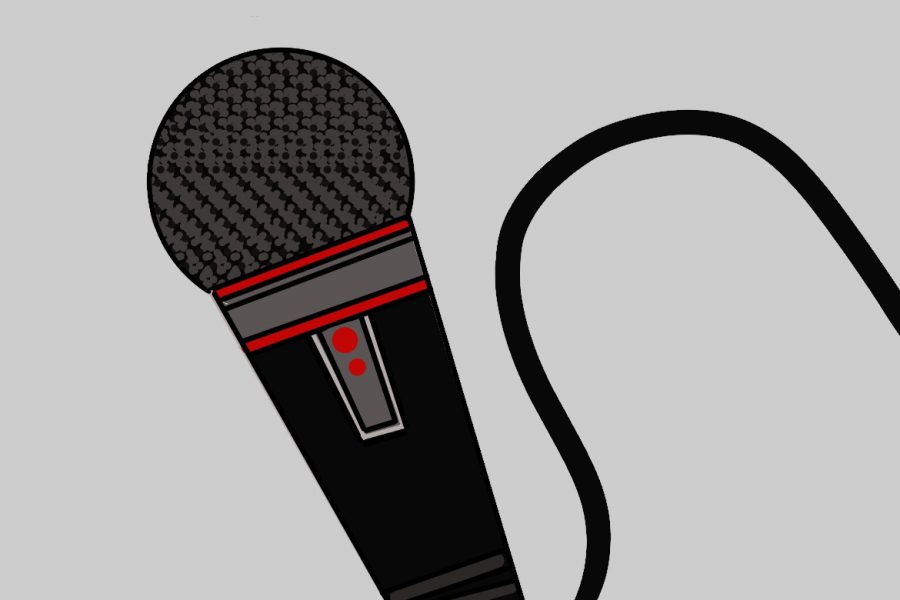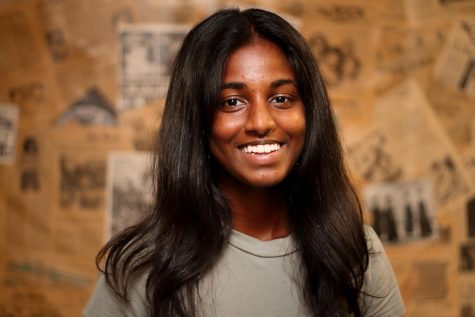Current senior and Co-President of Young Democrats Amanda Kurukulasuriya proudly participated in the first ever Columbia March for Our Lives on March 25, 2017, along with other RBHS students. The protest was for community members to come together and push for more effective gun control. While the main goal of March for Our Lives is to argue against the loose interpretation of the Second Amendment, the right to bear arms, March for Our Lives also promotes several parts of the First Amendment. This includes the freedom of speech and assembly, rights given to every person living in America, whether he or she is the president or a blue-collar worker, teen or adult, citizen or non-citizen.
Kurukulasuriya used her knowledge on political activism to write letters to Sen. Roy Blunt concerning the Green New Deal, a national plan to help the U.S. become better equipped for climate change. She also protested for her cause by standing with signs outside of his office in Columbia. Though only a few local community members came to the rally, Kurukulasuriya said she is proud to fight for change, regardless of whether she can or cannot quantify the difference the demonstrations made.
“It was cool to just have that experience,” Kurukulasuriya said, “because even if no one heard us, we could still say that ‘Hey, we are doing this,’ and then we were actually on the news that night. So just getting out there was worth it.”
In-person, physical movements are not all Kurukulasuriya does to promote change. As an avid social media user, she posts about her experiences with protests to express her thoughts on political issues. After following Barack Obama’s 2008 presidential campaign, Kurukulasuriya said she believes social media was a key component of his success.
“Social media just allows people to reach such a wide audience and facilitates the spread of information,” Kurukulasuriya said. “You can talk to a lot more people at once. It gets out there a lot faster. It can be more regular, and it allows for the wider dissemination of information.”
Posting online has its advantages and disadvantages, Kathy Kiely, the Lee Hills Chair in Free Press Studies for the University of Missouri—Columbia School of Journalism, said. In the past, the most common production of journalism was by the wealthy, who owned printing presses and trucks to send out newspapers, according to the University of Illinois’s library. Now, however, with the global expansion of the smartphone, Kiely said there is a guarantee that anyone with a device can be a publisher. This does not mean the facts printed will be true, however, as not everyone is responsible enough or trained to publish accurate news.
“Because there is a lot more information out there and not all of it is reliable, it has fueled the dislike of the media,” Kiely said. “I think what’s important is for people to understand that not all media is the same and that something you see from your local newspaper is not the same as a Facebook post from somebody you’ve never heard of.”
Kiely said she believes people need to have better tools for evaluating information they receive on the web. As consumers of the media, it is important to be smart and savvy about how and what one absorbs, Kiely said, as people cannot be denied the ability to publish their own views.
“We’re living in a sea of change and in a communication’s revolution, so digital technology
has profoundly changed the way that we communicate with each other,” Kiely said. “I think the fact that people can publish anonymously has made people less civil, and that fuels this change in attitude toward the media.”
Still, Kiely said she is a strong advocate for the protection of the First Amendment, no matter the effects of allowing anyone to publish their thoughts and viewpoints. She said the free flow of reliable information to the public depends on the way the U.S. is run.The strength of its democracy derives from how open the American society is to new perspectives. The “marketplace of ideas” threatens to crumble when points of views are blocked, Kiely said.
“I think it’s very, very important that we defend [the rights within the First Amendment], even when it means allowing ugly things to be said and printed,” Kiely said. “I’d rather have ugly voices drowned out than censored.”
As a veteran news reporter, Kiely said the main way the First Amendment is threatened right now is by the financial issues facing the press. Living in the digital revolution, the development from mechanical to analog technology in the late 20th century has changed how and where advertisers place their commercials. They opt to post online rather than buying a space in a print publication so newspapers, TV stations and radio broadcasts now have to find new places to gain revenue to pay for their publications and staff.
The financial burden is not the only difficulty the press faces. A September survey from the Committee to Protect Journalists showed 85 percent of female journalists have felt unsafe while reporting. The cases range from physical harassment to online attacks. Kiely said the First Amendment’s protection is tested through these assaults, but not broken, yet.
“I’ve seen threats to hinder the media, but we haven’t actually seen [the harassment] happening in a way that impacts what people are publishing,” Kiely said. “There are some reporters who have been threatened and harassed, but it hasn’t stopped them from doing their jobs.”
As the world develops digitally, for better and for worse, the role young adults and students play has increased as well, senior Anushka Jalisatgi, Vice President of RBHS Students Demand Action (SDA), said. Jalisatgi has used both her position of authority and her accounts on social media to create a platform to promote change. She said she believes the spread of information online has helped students her age have a say in the decision-making around the local community.
“Adults might not see things from the lens of a teenager because it seems like it won’t really impact them,” Jalisatgi said. “It’s really cool to see more students get involved in social movements and politics and how they’re using that platform to share their truths.”
Jalisatgi has also participated in March For Our Lives and other SDA events that promote high schoolers using their First Amendment rights. She wants to actively work with the local community and speak to, or even shift the narrative of current conversations.
“We are still young, and most of us can’t even vote yet, so I think our only weapon would be our voice,” Jalisatgi said. “Using our First Amendment rights and our power through social media, we can basically combat the changes that our policy makers made and influence them in that way.”
Greta Thunberg, a focus of recent national news due to her speech at the 2019 United Nations (UN) Climate Action Summit Sept. 23, influenced Jalisatgi and Kurukulasuriya’s beliefs. Thunberg, a 16-year-old Swede, started her journey as a climate activist when discovered by the UN for her protests outside of the Swedish Parliament proclaiming the need for stronger action against global warming. During her speech at the UN, Thunberg addressed the urgency of climate change, and in doing so also affected people across the U.S. Jalisatgi said she believes Thunberg impacted the attitude toward student activists.
“A lot of youth movements and teens voices gained momentum from Greta [Thunberg] because she was taken so seriously,” Jalisatgi said. “Now a lot of teen groups are gaining speed since people are thinking ‘Oh, maybe these teenagers are on to something.’”
Jalisatgi and Kurukulasuriya both said the key to the spread of opinions is how the younger generation uses its constitutional rights to the fullest. The utilization of freedoms can be through sending messages across social media accounts or by showcasing physical opposition. Jalisatgi and Kurukulasuriya value the freedoms the First Amendment provides to express their own personal morals as well.
“That part of our culture has made students feel like they can talk,” Kurukulasuriya said, “and it’s allowed us to be a lot more outspoken and let us be more active politically and socially because we are able to say what we want to.”
How do you use your First Amendment rights to create change? Let us know in the comments below.



















































































